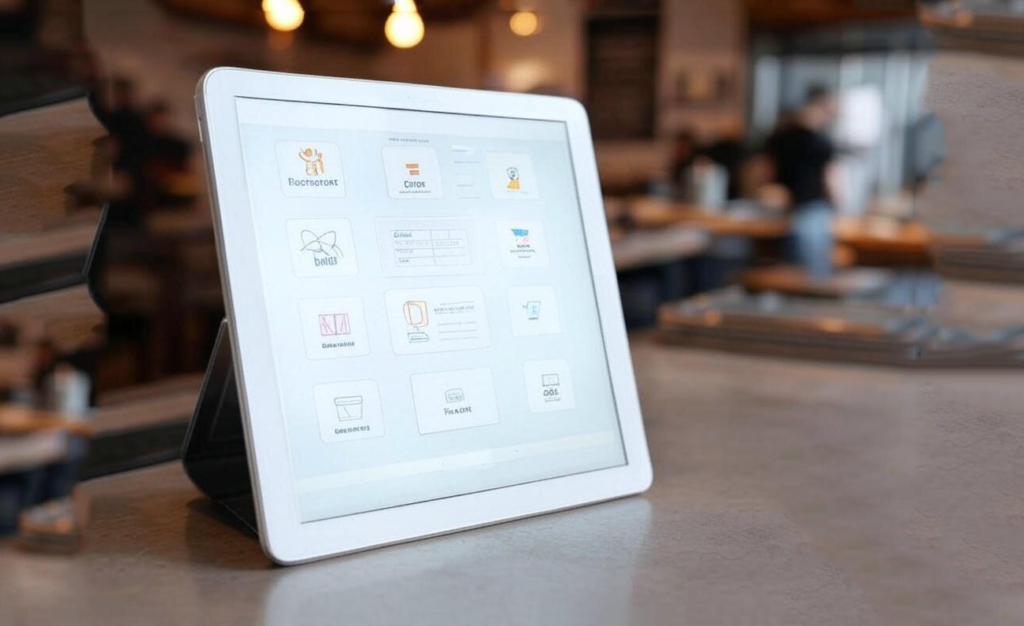Table of Contents
For catering merchants and service providers, a robust point-of-sale (POS) system is essential to streamline operations, enhance customer experiences, and drive profitability. White-label POS solutions offer a unique opportunity to deliver branded, customizable systems without the high costs of developing software from scratch. By deploying these solutions effectively, restaurant owners and service providers can meet the diverse needs of the catering industry while strengthening their brand.
What is a White-Label POS?
A white-label POS is a pre-built, customizable point-of-sale platform that catering merchants and service providers can rebrand and deploy as their own. These systems support critical restaurant functions like order management, payment processing, inventory tracking, and customer engagement, all under your unique brand identity. White-label POS solutions enable businesses to offer tailored technology to restaurants, cafes, food trucks, and more, without investing in proprietary software development.
Why Deploy White-Label POS Solutions?
Deploying a white-label POS offers significant advantages for catering merchants and service providers:
- Brand Control: Deliver a POS system that reflects your brand, fostering trust and loyalty among restaurant clients.
- Cost Efficiency: Save on development costs by leveraging a proven platform.
- Flexibility: Customize features to suit various restaurant types, from quick-service to fine dining.
- Speed to Market: Launch a branded solution quickly to meet industry demands, like contactless payments or online ordering.
Effective deployment ensures these benefits translate into real-world success for both providers and their restaurant clients.

Best Practices for Deploying White-Label POS Solutions
Deploying a white-label POS requires careful planning to ensure smooth adoption and long-term value for restaurants. Below are the top best practices tailored for catering merchants and service providers.
1. Understand Restaurant Needs Before Deployment
Every restaurant operates differently, and their POS requirements vary. Quick-service restaurants prioritize speed, fine dining venues value table management, and food trucks need mobility. Before deploying a white-label POS, research your clients’ needs to ensure the system aligns with their operations.
- Actionable Tip: Engage with restaurant owners through surveys or monitor social media posts to identify pain points, such as slow checkouts or inventory mismanagement.
- Example: A cafe may need a white-label POS with offline mode for pop-up events, while a chain restaurant requires multi-location reporting.
2. Customize for Seamless Branding and Functionality
A white-label POS should feel like a natural extension of your brand while meeting restaurant expectations. Customization is key to deployment success:
- Visual Branding: Apply your logo, colors, and fonts to the POS interface for a consistent experience.
- Feature Tailoring: Prioritize tools like loyalty programs, kitchen display systems, or mobile ordering based on client priorities.
- User-Friendly Design: Simplify dashboards for staff to process orders and payments quickly.
Actionable Tip: Collaborate with your white-label POS provider to access flexible customization options, such as API-driven feature additions.
3. Ensure Robust Integrations
Restaurants rely on interconnected tools to operate efficiently. A white-label POS must integrate seamlessly with:
- Payment Processors: Support EMV, NFC (Apple Pay, Google Wallet), and online payments.
- Third-Party Apps: Connect with accounting software (QuickBooks), delivery platforms (DoorDash), or reservation systems (OpenTable).
- Hardware: Ensure compatibility with existing terminals, printers, and tablets.
Actionable Tip: Create a checklist of must-have integrations for your target restaurants and test them thoroughly before deployment.
4. Provide Comprehensive Training and Onboarding
Restaurant staff are often pressed for time, making intuitive training critical for adoption. A well-deployed white-label POS includes:
- Tutorials: Offer video guides or PDFs covering order entry, refunds, and reporting.
- Live Support: Provide virtual or in-person training for managers and staff.
- Self-Service Resources: Build a help portal for troubleshooting common issues, like voiding transactions.
Actionable Tip: Use short, engaging training modules to respect staff schedules and improve retention.
5. Pilot Test for Real-World Feedback
Before a full rollout, deploy the white-label POS with a small group of restaurants to identify potential issues and refine the system. A pilot program helps:
- Detect bugs, such as slow transaction processing or integration glitches.
- Gather feedback on usability, like staff experience with the interface.
- Validate features, ensuring they meet restaurant needs, such as inventory tracking or tip management.
Actionable Tip: Offer pilot restaurants discounted rates in exchange for detailed feedback or testimonials.
6. Prioritize Scalability and Reliability
Restaurants grow, and your white-label POS must scale with them. Ensure the solution supports:
- High transaction volumes during peak hours, like weekend rushes.
- Multi-location management for restaurant chains or franchises.
- Regular updates to incorporate trends, such as AI-driven analytics or QR code menus.
Actionable Tip: Confirm with your provider that the white-label POS uses cloud-based infrastructure for reliability and scalability.
7. Monitor Performance Post-Deployment
After deployment, track key metrics to ensure the POS delivers value:
- Uptime: Monitor for system downtime or slowdowns that disrupt operations.
- Adoption Rates: Measure how quickly staff and managers embrace the system.
- Client Feedback: Use surveys or monitor social media for insights into restaurant satisfaction.
Actionable Tip: Share performance reports with clients to demonstrate the system’s impact, such as faster order processing or reduced errors.
8. Offer Exceptional Customer Support
Ongoing support is crucial for restaurant trust and retention. Provide:
- 24/7 assistance via phone, chat, or email for technical issues.
- Proactive updates to address bugs or compliance requirements, like PCI standards.
- Dedicated account managers for larger clients, such as restaurant groups.
Actionable Tip: Leverage social media to monitor client sentiment and respond promptly to concerns, showcasing your commitment to service.

Overcoming Common Deployment Challenges
Deploying a white-label POS can present hurdles. Here’s how to address them:
- Challenge: Resistance from restaurant staff to new technology.
- Solution: Emphasize ease of use and provide hands-on training to build confidence.
- Challenge: Integration issues with existing systems.
- Solution: Test integrations thoroughly and partner with providers offering robust APIs.
- Challenge: Competing with established POS brands.
- Solution: Highlight unique features, like tailored branding or budget-friendly pricing, to differentiate.
Conclusion
Deploying white-label POS solutions empowers catering merchants and service providers to deliver branded, efficient systems that meet the unique needs of restaurants. By understanding client requirements, customizing for branding, ensuring integrations, and providing robust training and support, you can achieve seamless adoption and long-term success. A well-executed deployment not only enhances restaurant operations but also strengthens your reputation as a trusted technology partner.
Ready to deploy a white-label POS? Partner with a reliable provider and follow these best practices to launch a solution that drives restaurant efficiency and elevates your brand.
As a professional restaurant POS provider>>
—— OrderPin has tailored white-label POS solutions for hundreds of ISV/MSP.


